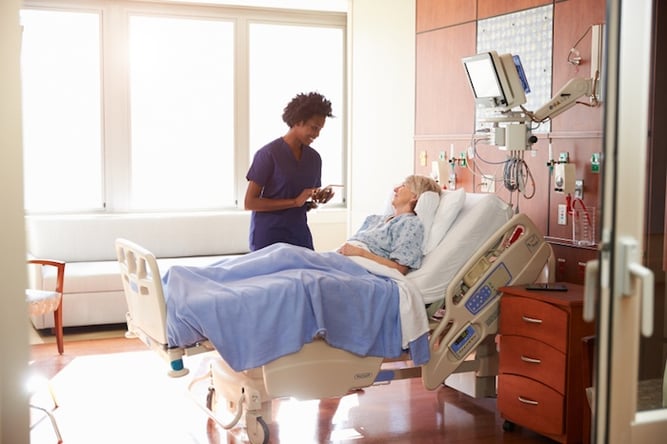
Every good nurse knows that the job involves much more than simply treating the patient’s current illness or injury. Instead, nurses should try to anticipate potential complications that could arise for their patients and implement measures to prevent them from happening.
Preventing aspiration pneumonia is one example. Let’s look at some strategies that nurses can employ to help their patients avoid this dangerous syndrome.
1. Identify patients at high risk
Technically, any patient can aspirate, but most healthy individuals can tolerate small amounts of aspirated material with little effect. However, certain patients are at higher risk of aspirating and developing complications. This includes those who:
- Are elderly
- Have a swallowing disorder
- Have impaired mental status
- Have a history of seizures or stroke
- Frequently vomit
- Have dental problems
Recognizing those at high risk allows the nurse to take proactive precautions.
2. Consider the effect of patient medications
Several medications increase the likelihood of aspiration. Sedatives are the most commonly implicated, but it is important to know the others. Opioids, hypnotics, anti-anxiety medications, and muscle relaxers can affect the patient’s ability to swallow. Anticholinergics and calcium channel blockers relax the esophageal sphincter. Alcohol, anticholinergics, and anesthetics can affect a patient's ability to cough and gag.
If appropriate, discontinuing or decreasing these medications may be helpful. However, when this is not possible, patients should be closely monitored.
3. Perform oral care
When oral hygiene is performed regularly, it decreases the amount of oral bacteria. Less bacteria in secretions lowers the risk of infection.
4. Modify oral intake
Allowing patients to eat in a relaxed environment without distractions may help minimize aspiration. Patients should also be fed smaller amounts at a time.
Patients with difficulty swallowing may need the consistency of their food modified to be safer and easier to eat. Thickened liquids or alternating solids and liquids may be better tolerated. Sticky, stringy, dry, and chewy foods should be avoided. Dairy products may also cause difficulty since they may cause an increase in mucous.
5. Consider a team approach
Speech and occupational therapy can be very helpful. Having patients work with these disciplines to improve their swallowing technique and strengthen the underlying physiology may decrease the risk of aspiration. Proper positioning and the use of special adaptive feeding tools should also be addressed.
6. Make sure suction is available
For patients with difficulty swallowing or coughing, frequent suctioning of oropharyngeal secretions may be needed to clear an airway. In-wall or portable suction should be properly set up and ready to go for these patients.
Monitor patients while feeding. If any signs of aspiration are noted, the patient should be suctioned immediately.
Aspiration pneumonia can be a very serious medical condition, especially for patients who are already compromised. By incorporating these interventions into their patient care, nurses can help prevent this dangerous complication.
Editor's note: This blog was originally from July 2024. It has been re-published with additional up to date content.















